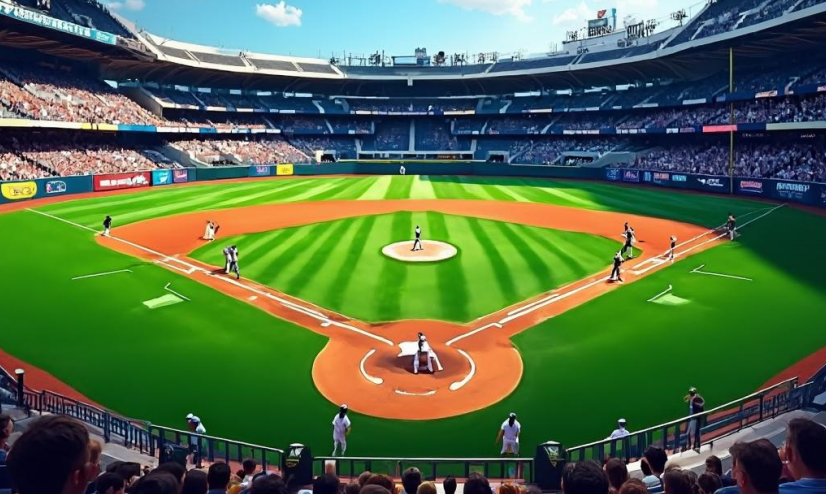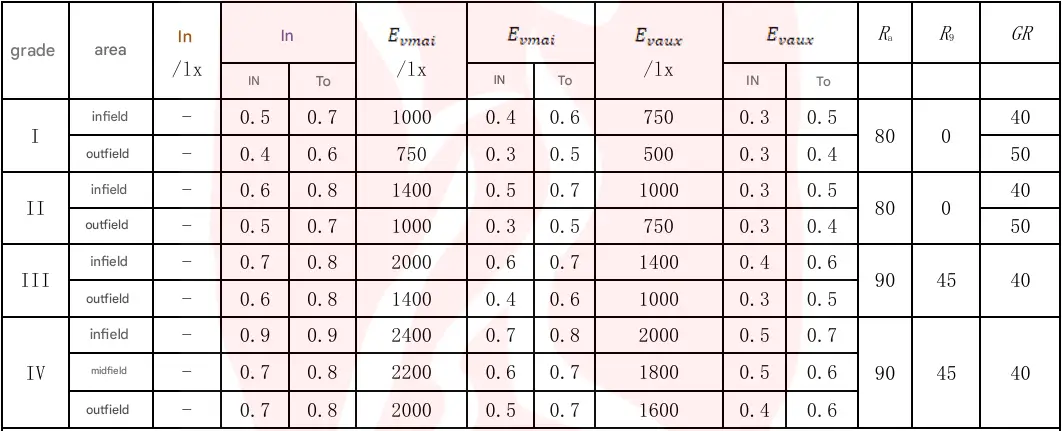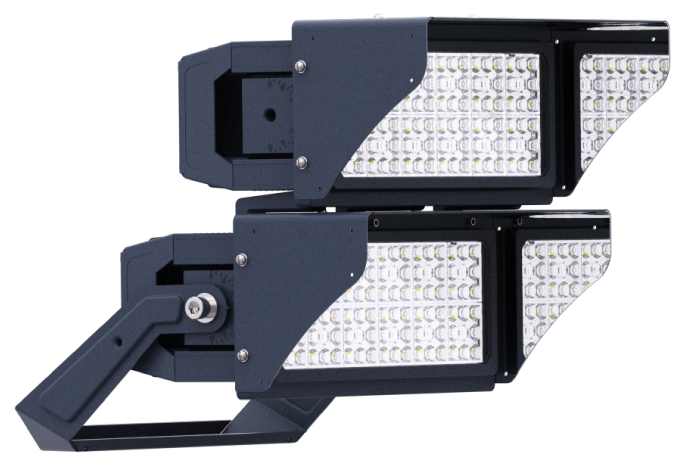Technical Guidelines for Outdoor Baseball Field Lighting Systems
Technical Guidelines for Outdoor Baseball Field Lighting Systems(CBAA)

Directory:
1. Lighting Levels & Classification
2. Standard lighting values for baseball fields of grades I-IV
3. Field Zone Requirements
4. Lighting Equipment (LED Focus)
5. Lighting Layout & Poles
6. Power, Control & Emergency Lighting
7. Measurement & Compliance
Lighting plays a critical role in modern baseball venues, ensuring optimal visibility for athletes, officials, and spectators, and meeting the demanding requirements of broadcast media. This overview outlines key technical specifications for outdoor baseball field lighting systems designed for televised events, based on relevant industry practices and standards.
1. Lighting Levels & Classification
Lighting systems are classified into four levels based on broadcast requirements:
Level I: General Broadcast
Level II: Standard Television Broadcast
Level III: HDTV (High Definition Television) Broadcast
Level IV: Ultra-High Definition Television Broadcast (4K, 8K)
2. Standard lighting values for baseball fields of grades I-IV

3. Field Zone Requirements
Infield: Highest illuminance and uniformity demands, especially around pitcher's mound, batter's box, and bases.
Midfield & Outfield: Slightly lower requirements than infield, but sufficient for tracking high fly balls. Midfield may have specific requirements depending on field layout.
Special Areas: Pitcher's practice areas require dedicated lighting meeting specific E_h, uniformity, Ra, and GR targets (e.g., E_h ≥ 1000 lx, U2 ≥ 0.7, Ra ≥ 80, GR ≤ 40).
Ball Flight & Spectator Areas: Adequate illumination must be provided for tracking balls hit into spectator areas and high fly ball trajectories. Minimum spectator seat horizontal illuminance is typically 50 lx.
4. Lighting Equipment (LED Focus)
Light Source: LED fixtures with instant start/restrike are preferred.
Performance: Stable operation, good photometric characteristics, long lifespan matching relevant standards. Color tolerance (SDCM) ≤ 5.
Requirements:
Easy maintenance and replacement.
Initial luminous flux within 90%-120% of rated value.
Effective glare, spill light, and obtrusive light control (baffles, shields).
Safety compliance (equivalent to standards like IEC 60598-1, -2-5, -2-18).
Robust construction: IP65 minimum ingress protection.
LM-80/90 data for lumen maintenance projections.
Inrush current limited (< 15x operating current).
Drivers: Must match fixture power, provide long life, limit harmonic distortion (<10%), withstand high ambient temperatures (≥85°C), and ideally support remote mounting.
5. Lighting Layout & Poles
Methods: Pole-mounted, catenary (over spectator areas), or hybrid systems.
Coverage: Ensure each field area is illuminated from at least three directions to minimize shadows.
Pole Placement: Typically 8 poles located outside the main viewing angles (≥20° from key sightlines like pitcher-batter) and avoiding designated shadow zones. Common layout diagrams show positioning relative to bases and outfield.
Pole Height: Determined by the angle between the pole top and key field positions (e.g., shortstop or second base), typically between 25° and 40°. Structural design must meet safety standards with appropriate corrosion protection (e.g., hot-dip galvanizing).
6. Power, Control & Emergency Lighting
Power Supply: Levels III/IV require dual independent power sources; Levels I/II benefit from dual circuits. Voltage variation at fixtures limited to ±5%.
Protection: Individual protection per fixture. Levels III/IV require an emergency mode supplying 50% of field lighting during a circuit failure.
Control Systems: Levels II+ require intelligent control (e.g., DMX) for dimming, scene setting (different events/levels), soft start/stop, and grouping to manage inrush current. Integration with show systems (audio/video) for effects is essential. Open communication protocols (e.g., UDP) are recommended.
Emergency Lighting: Must provide minimum vertical illuminance (≥750 lx) for critical broadcast cameras during power failure, plus safety lighting for spectators (≥20 lx avg horizontal) and evacuation paths (≥5 lx min horizontal).
7. Measurement & Compliance
Grids: Calculation and measurement grids are defined per field zone (e.g., Inf: 2.5m calc / 5m meas; Mid/Out: 5m calc / 10m meas).
Parameters: Testing includes Horizontal/Vertical Illuminance (avg, min, max, uniformity U1/U2), Illuminance Gradient (max change ≤20% per 5m), GR, Ra, T_cp, and LPD.
Conditions: Measurements taken after lamps are stabilized (>100h burn-in, >40 mins on before test), with all relevant lights on and voltage monitored.
Reporting: Detailed reports include equipment specs, layouts, measurement points, calculated values, and compliance assessment against the standard's requirements.
Qualification: Testing must be performed by accredited agencies. All specified parameters must pass for the installation to be deemed compliant.
Key Considerations:
Design integration with venue architecture is crucial from the outset.
Technology selection balances performance, energy efficiency, maintenance, and cost.
Pre-commissioning testing by accredited bodies is mandatory for major competitions.
Standards evolve to meet advancing broadcast technology (e.g., HDR, 4K/8K) and energy efficiency goals.
8. Related Product

9. Related Blog
Baseball and Softball Field Lighting: Standard,Layout,Dimensions
